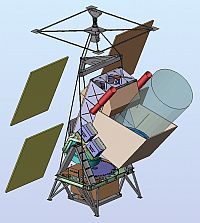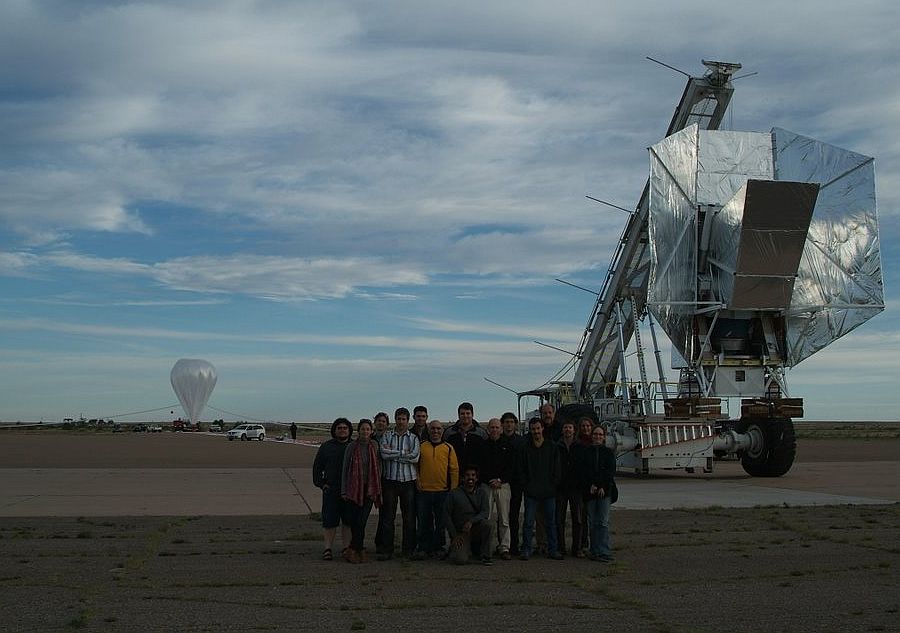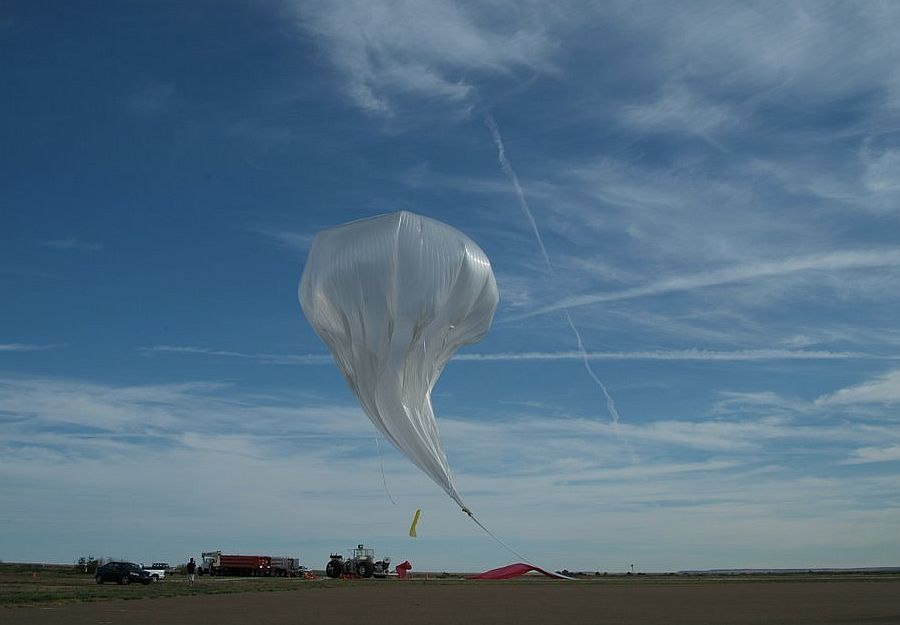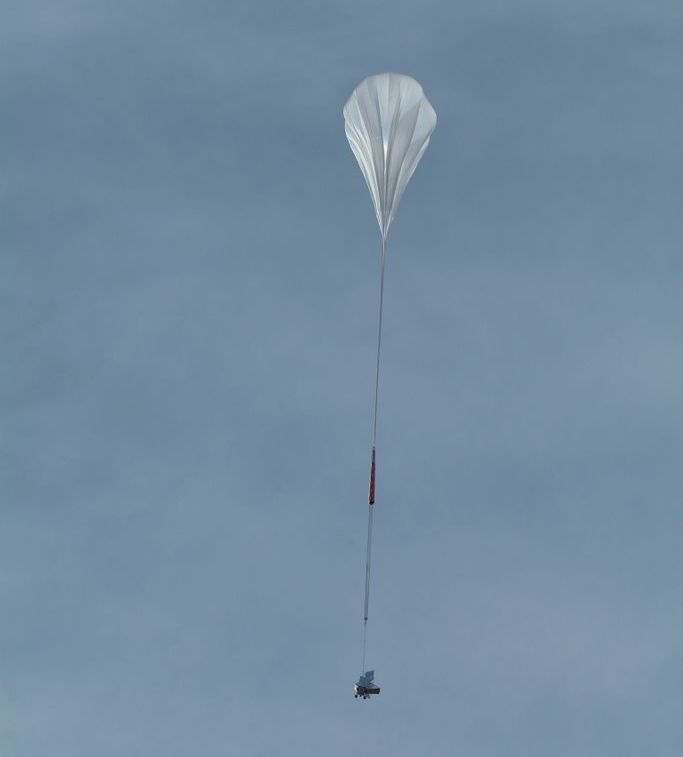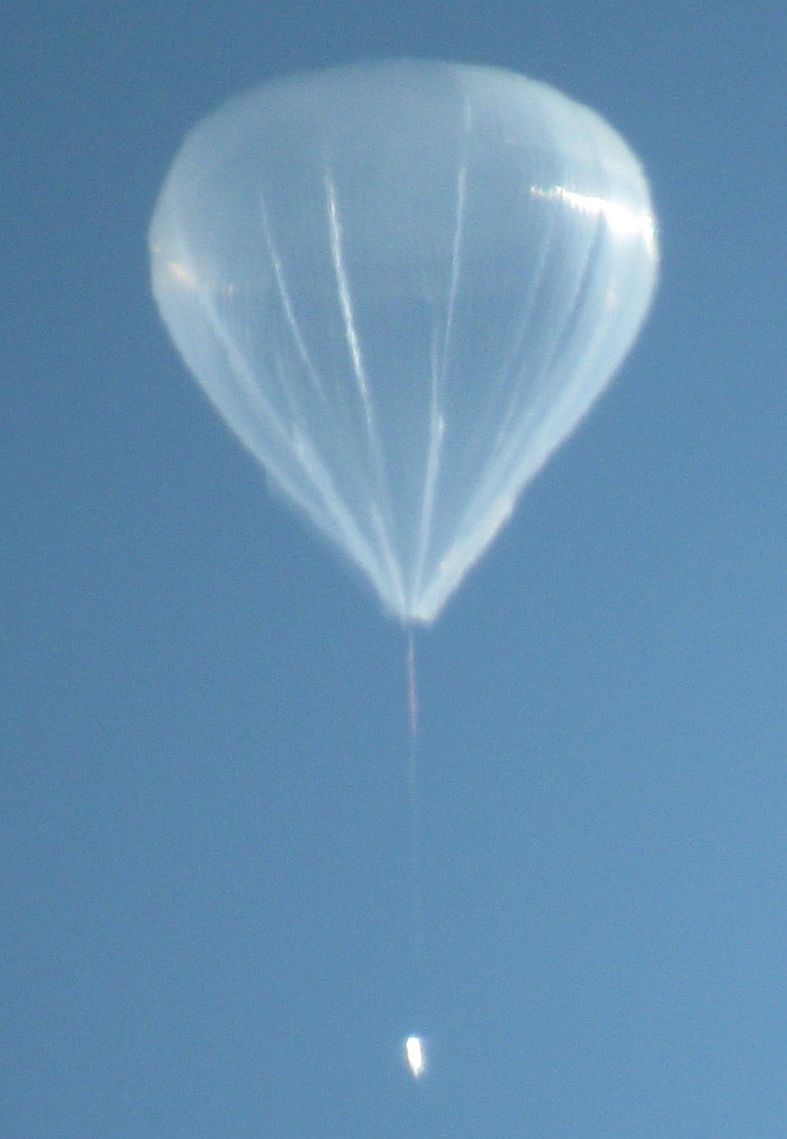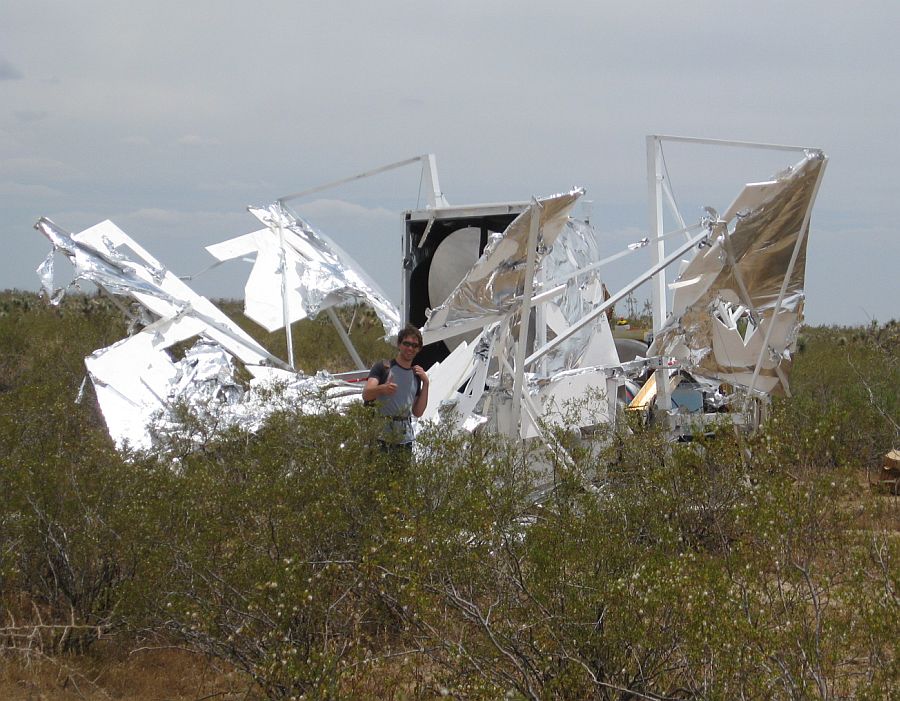Purpose of the flight and payload description
EBEX is a balloon-borne polarimeter designed to obtain measurements of the cosmic microwave background radiation (CMB) that would probe the inflationary epoch that took place shortly after the big bang. A promising way to confirm that model is via its prediction of a stochastic background of gravity waves, called the inflationary gravitational-wave background (IGB) . The best known way to search for the IGB is through its signature on the CMB polarization.
EBEX is unique among CMB polarization experiments because it have the broadest frequency coverage of all current and proposed bolometric CMB polarimeters giving it an unprecedented capability to characterize the polarized dust emission and determine its angular power spectra in both E and B-type polarizations, and providing an important milestone in the implementation and testing of hardware and techniques that are being considered for a future NASA CMB polarization satellite.
EBEX employ a 1.5 m telescope to focus the incoming radiation on up to four separate focal planes, each containing hundreds of Transition Edge Sensors (TES) spider web bolometers. The experiment operates at four frequency bands, centered on 150, 250, 350, and 450 GHz.
The bolometers are grouped in arrays of 55 TES bolometers. A 330 element TES array is built by tiling six 55 element arrays to fill one of the four focal planes. They are cooled at a temperature of 300 mK in a bath of liquid helium or nitrogen provided by a cryostat.
The EBEX optical system consists of the well-characterized Archeops 1.5 m aperture primary mirror with the addition of a brand new 1.2 m elliptical secondary that together make a Dragone telescope.
Four cold lenses (made of silicon and high density polyethilene), a dichroic filter and two polarizing grids focuses the incoming radiation and after being filtered, the differents frequencies are fed to different parts of the four focal planes.
Two focal planes with up to a total of 660 TES detectors are allocated for the 150 GHz band while the other two focal planes with a similar number of detectors are allocated for the three higher frequency bands. For each of the frequency bands, bandpass filters mounted in front of the focal plane will define the exact band shape.
To modulate the polarization signal EBEX uses a combination of a rotating half-wave plate (HWP) and a fixed polarizing grid because this technique provides strong discrimination against systematic errors. To date all successful non-interferometric measurements of IR and mm-wave polarization have used a HWP to modulate the polarization signal.
The instrument is mounted in a specially built gondola designed at SSL Berkeley and integrated at the Nevis Lab at Columbia University. Above left can be seen an scheme of it (click to enlarge).
It uses a cable based suspension system which connects EBEX to the balloon throught a rotor. It isolates the gondola from any movement coming from the balloon, counteracting the rotation momentum through a reaction wheel located in the bottom of the gondola. The system rotates around the vertical axis to cover great portions of sky, while can be steered too in azimuth through an elevator actuator.
As the pointing system was modeled based on other succesful experiments like BLAST, MAXIMA and BOOMERANG the primary real time sensors of the system is composed of a Star Camera, 3 fiberoptic Gyros, and a magnetometer or sun sensor while the primary reconstructions sensors (that provide the fine pointing data to be used for post flight data analysis) are the Star camera and several gyroscopes.
Details of the balloon flight
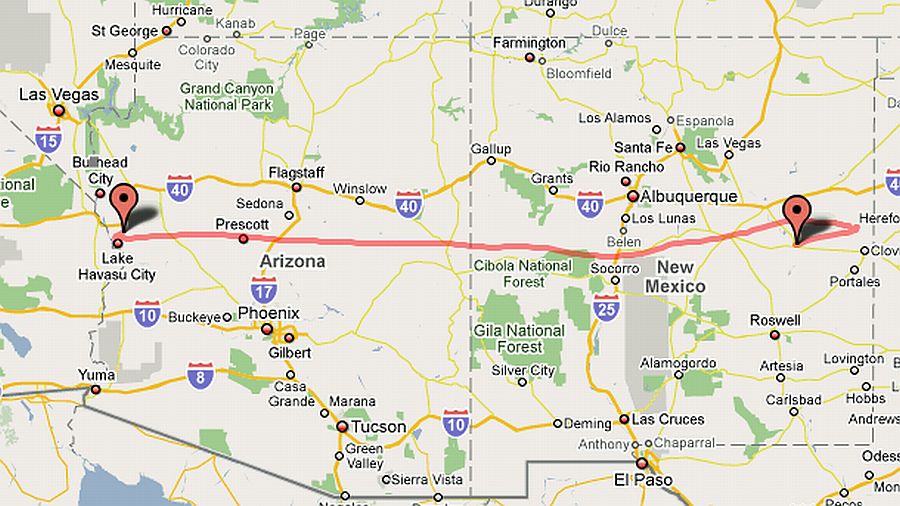
Balloon launched on: 6/11/2009 at 14:02
Launch site: Scientific Flight Balloon Facility, Fort Sumner, (NM), US
Balloon launched by: Columbia Scientific Balloon Facility (CSBF)
Balloon manufacturer/size/composition: Zero Pressure Balloon Aerostar - 34 H (34.430.000 ft3 - 0.8 mil - Stratofilm)
Flight identification number: 598N
End of flight (L for landing time, W for last contact, otherwise termination time): 6/12/2009 at 3:40
Balloon flight duration (F: time at float only, otherwise total flight time in d:days / h:hours or m:minutes - ): 13 h 40 m
Landing site: N of Lake Havasu City, Arizona, US
The balloon was launched by dynamic method with assistance of launch vehicle (Big Bill) on June 11 at 14:02 utc. After a nominal ascent phase with a eastward flight path, it reached float altitude of near 117.000 ft and mounted onto the Jet Stream and following a very arrow-like straight course crossed the sky of New Mexico and Arizona.
Thousands of people in cities like Albuquerque, Prescott, Phoenix and all the zone of the Northwest of the Valley in Arizona watching the sky enjoyed a sight that mesmerized them as well flooded with calls asking for an answer the telephones of Tv and Radio stations on the area.
After a flight of 14 hours, 20 minutes, the flight was terminated on June 12 at 3:40 utc. The termination was performed from the Fort Sumner control center using data linked from the downrange station at Winslow, Arizona. A standard SAPR parachute separation was performed from the chase aircraft.
The payload landed 24-nm northeast of Lake Havasu City, Arizona and was recovered successfully.
This first engineering flight of the instrument also marked the first time that TES bolometers were used in a non-terrestrial environment.
After launch, the science group discovered that they had experienced a failure in the telescope vertical drive mechanism. The failure resulted in the telescope driving to its lowest limit of 15.5 degrees above the horizon and remaining frozen at that vertical position. So it was neccesary to modify the original scanning strategy, to try to obtain valid science data within this limited field of view.
The observations performed during the ten hours of flight included a Saturn scan (beam mapping) and a Cosmic Microwave Background dipole scan (absolute flux response, instrumental polarization).
External references
- EBEX website I University nof Minnesota Physycs and Astronomy group
- EBEX website II At Columbia University
- Bolometric detectors for EBEX: a balloon-borne cosmic microwave background polarimeter University of Minnesota Ph.D. dissertation. December 2009
- Calibration of the E and B EXperiment (EBEX), a balloon-borne cosmic microwave background polarimeter University of Minnesota Ph.D. dissertation. October 2009
- Design and characterization of TES bolometers and SQUID readout electronics for a balloon-borne application in SPIE Proceedings Vol. 7020, Marseille, 2008
- EBEX: A balloon-borne CMB polarization experiment Conference proceedings for SPIE Millimeter, Submillimeter, and Far-Infrared Detectors and Instrumentation for Astronomy V (2010)
- Launch of EBEX experiment at VIMEO
- Software systems for operation, control, and monitoring of the EBEX instrument Proceedings of SPIE Astronomical Telescopes and Instrumentation 2010
- The development and deployment of instrumentation to measure the polarized microwave sky Thesis by Kyle R. Helson, Brown University, 2016
- The E and B EXperiment: implementation and analysis of the 2009 engineering flight Retrieved from the University of Minnesota Digital Conservancy
- The EBEX Balloon-Borne Experiment - Gondola, Attitude Control, and Control Software submitted to ApJ Supp
- The EBEX Cryostat and Supporting Electronics 12th Marcel Grossman Conference
- The EBEX Experiment Proc.SPIEInt.Soc.Opt.Eng.5543:320-331,2004
- View of the integration and construction of the EBEX instrument Miller Lab. At Columbia University
- What WAS that? Light in night sky puzzled the earthbound news item in The Daily Courier
3721If you consider this website interesting or useful, you can help me to keep it up and running with a small donation to cover the operational costs. Just the equivalent of the price of a cup of coffee helps a lot.

